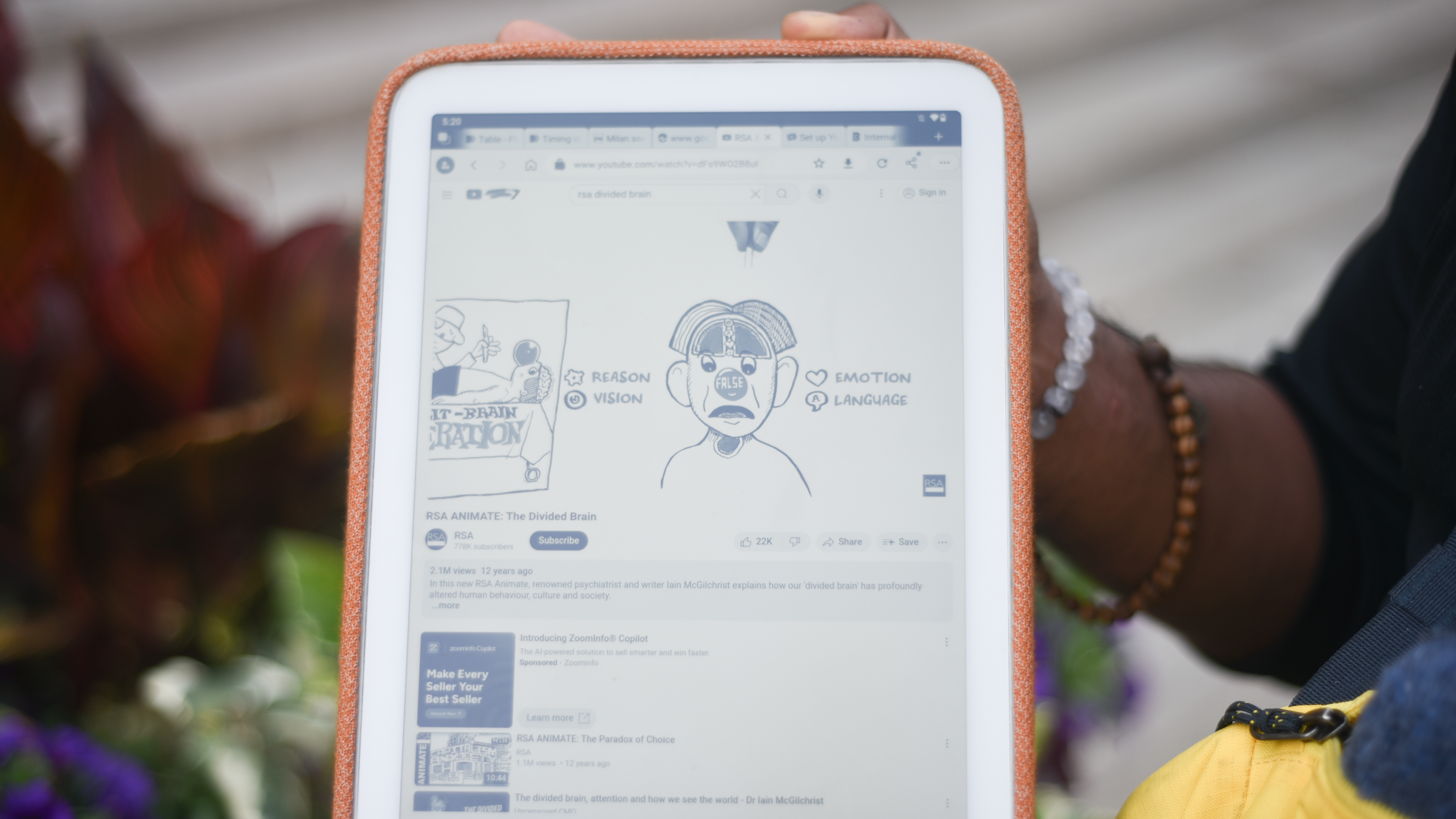
When I first saw the Daylight DC-1 in a promotional video, it looked too good to be true. A minimalistic, monochrome tablet, similar to my reMarkable 2 or Kindle Scribe, but with a display that could run fast enough to watch videos and play games, without the ghosting or hesitation of E Ink. Could this be the writing tablet of the future? The answer is complicated, but promising.
The Daylight DC-1 moves faster than any E Ink tablet I’ve seen, and I’ve seen the best E Ink devices from Onyx, a company pushing E Ink to its speed limit. That’s because the Daylight computer is not using E Ink.
When I say "E Ink," I'm talking about a specific screen technology as well as the company that makes it. There is only one company making E Ink, and that's E Ink Corporation. An E Ink panel belongs to a category of displays called e-paper (or "ePaper" as E Ink brands it). Instead of E Ink, the Daylight DC-1 uses a unique reflective LCD display that is also a type of e-paper.
The Daylight DC-1 can refresh up to 60Hz, which is fast enough for smooth video. An Onyx Boox Tab Ultra using E Ink can refresh somewhere between 10-20Hz at most, and the experience is not very smooth at that fast rate. You’ll see ghosted images, and the screen will flash frequently as it refreshes entirely – like shaking the Etch A Sketch, basically.
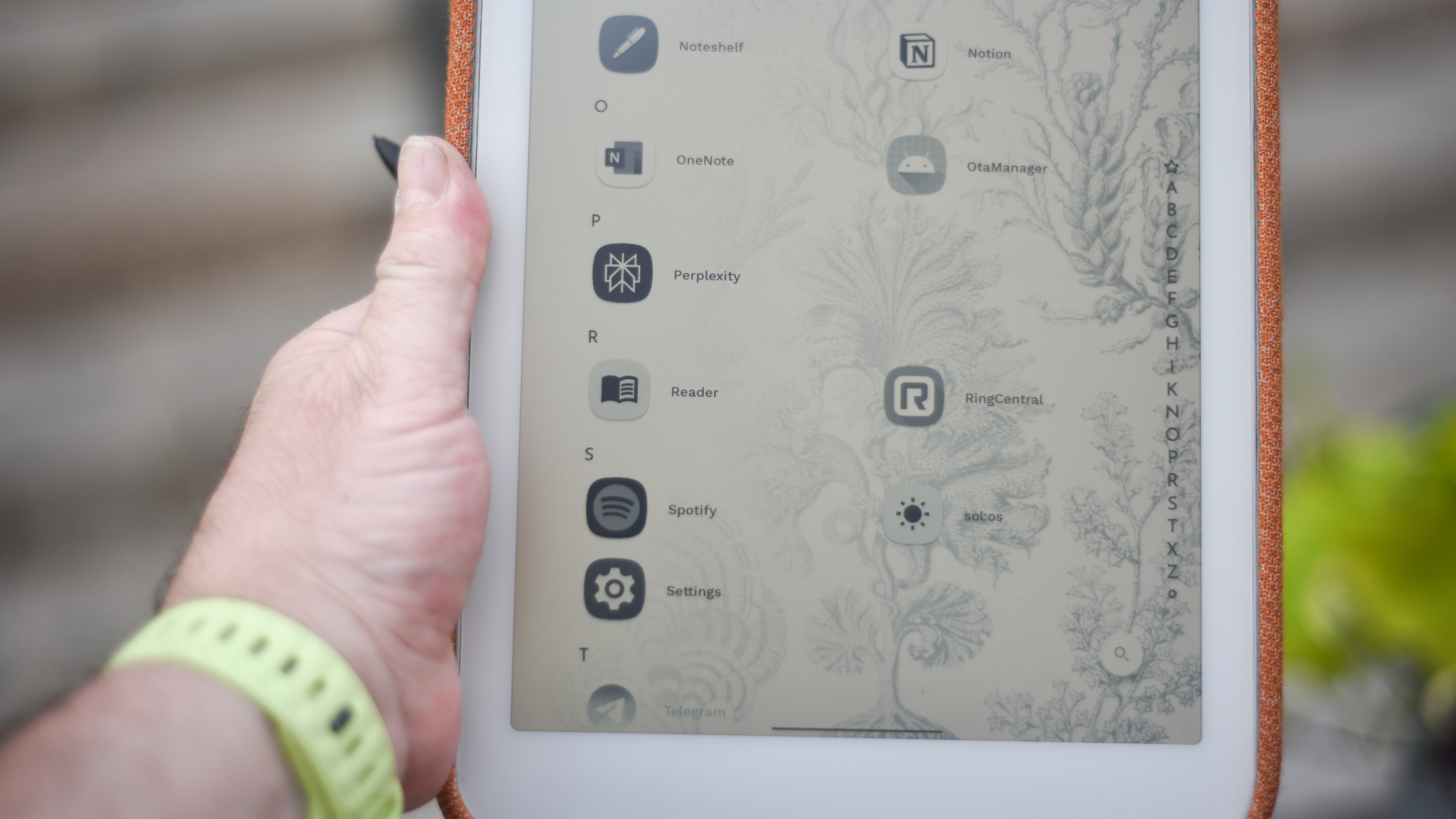
Daylight’s website claims its technology is “better than E-Ink [sic]” and “faster than E Ink.” It is certainly faster, but I wasn’t sure it was better.
The current generation of E Ink's Carta displays look amazing for reading and writing, like ink on paper. E Ink is sharper than any iPad. Even a basic Amazon Kindle has a display with 300 pixels per inch (ppi), while the iPad Pro is only 264 ppi. The sharpest full-color tablet I’ve used is the OnePlus Pad, which has 294 ppi, still a hair less sharp than a basic Kindle with an E Ink screen.
E Ink vs. LCD, the battle to be seen in sunlight
If you’ve owned a Kindle, you know that E Ink also gives you great battery life. If you read a Kindle for about an hour a day, it can last weeks on a single charge. It’s the perfect desert island device because the battery will last until you get saved, and it’s also easy to read in direct sunlight.
In fact, that’s a key feature of all e-paper displays – visibility in bright sunlight. An e-paper screen is a reflective display, so they reflect and diffuse sunlight and they do not have their own light source built into the display. Other screens, like OLED or LED-backlit LCD displays, are emissive displays that create their own light.
An e-paper display does not light up, so an e-paper device like a Kindle needs a separate light source if you want to see it in the dark. The biggest difference between the best Kindle models is the intensity of that light source; otherwise, the E Ink display is the same on the Kindle and Kindle Paperwhite.
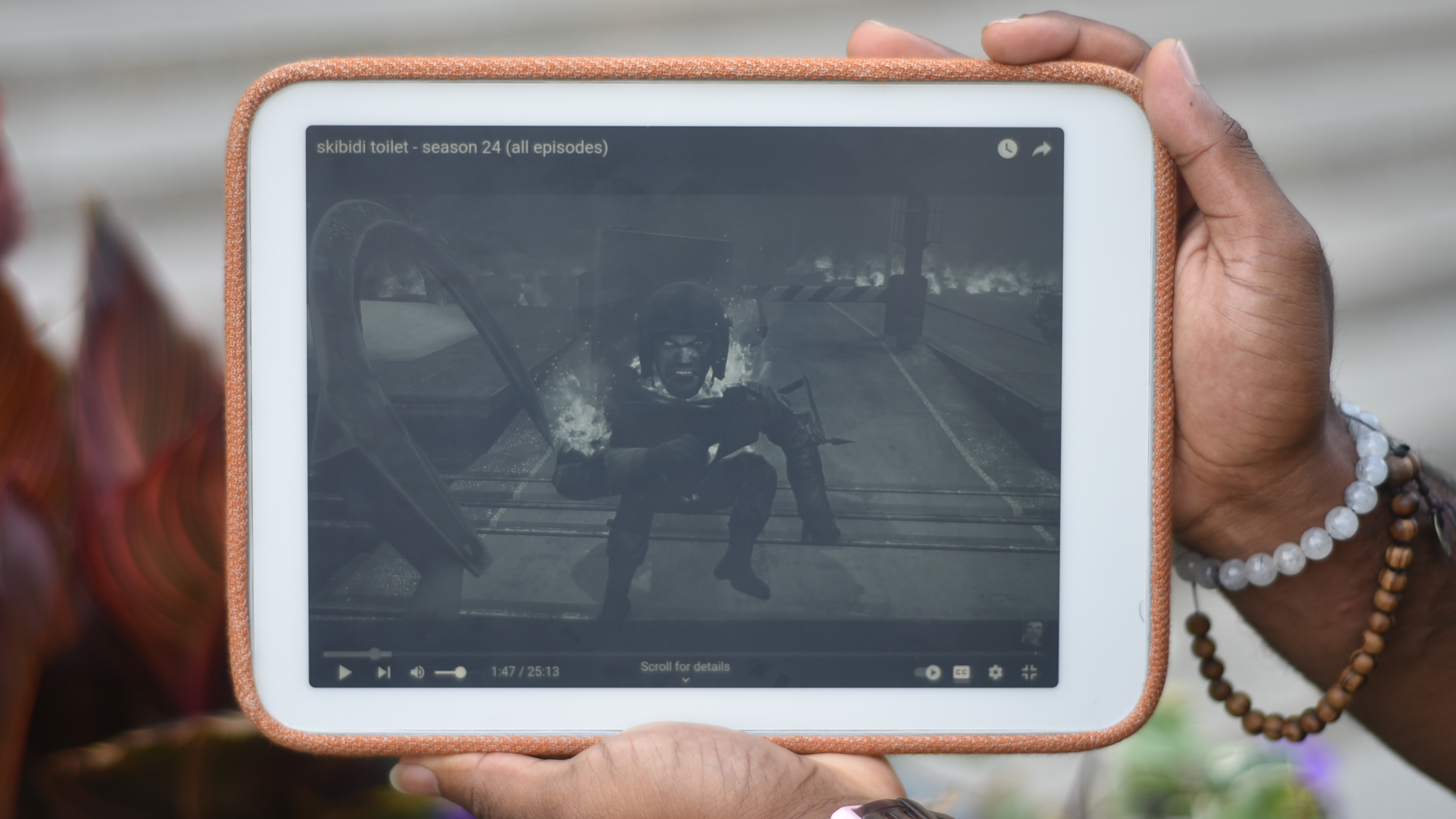
The Daylight DC-1, on the other hand, is an e-paper tablet but it does not use an E Ink display. It uses an LCD display that is reflective instead of emissive. That means it moves as fast as LCD, but you can still read it in direct sunlight.
I talked to Daylight Computer CEO Anjan Katta about the Daylight DC-1, and he told me that the big innovation for Daylight was making an LCD display that you could read in sunlight.
“That's essentially what our project was: how do you make a transflective or reflective LCD look like E Ink,” Katta tells me. “This took years figuring out how to make them more papery, which is about changing something called the Lambertian distribution, or reflection distribution … that was one of our key inventions.”
If you’ve used an iPad outside, you know it can be nearly impossible to read even the brightest tablet display in bright sunlight. An iPad is not made to reflect sunlight. In fact, it uses a coating to reduce glare, and this results in about 2.5% reflectance.
An E Ink tablet, on the other hand, reflects more than 40% of the light shining on its surface. That makes it much easier to read in bright sunlight. The problem for Daylight was creating a technology in the middle.
The company needed to create an LCD display that could perform like a normal LCD, but reflect much more light. Katta says the goal was 24%. "Humans perceive changes in light reflectance logarithmically, so if we could get over 24% that would be enough; it would seem much closer to E Ink," he says. The Daylight DC-1 tablet has a reflectance of around 25%, according to Katta.
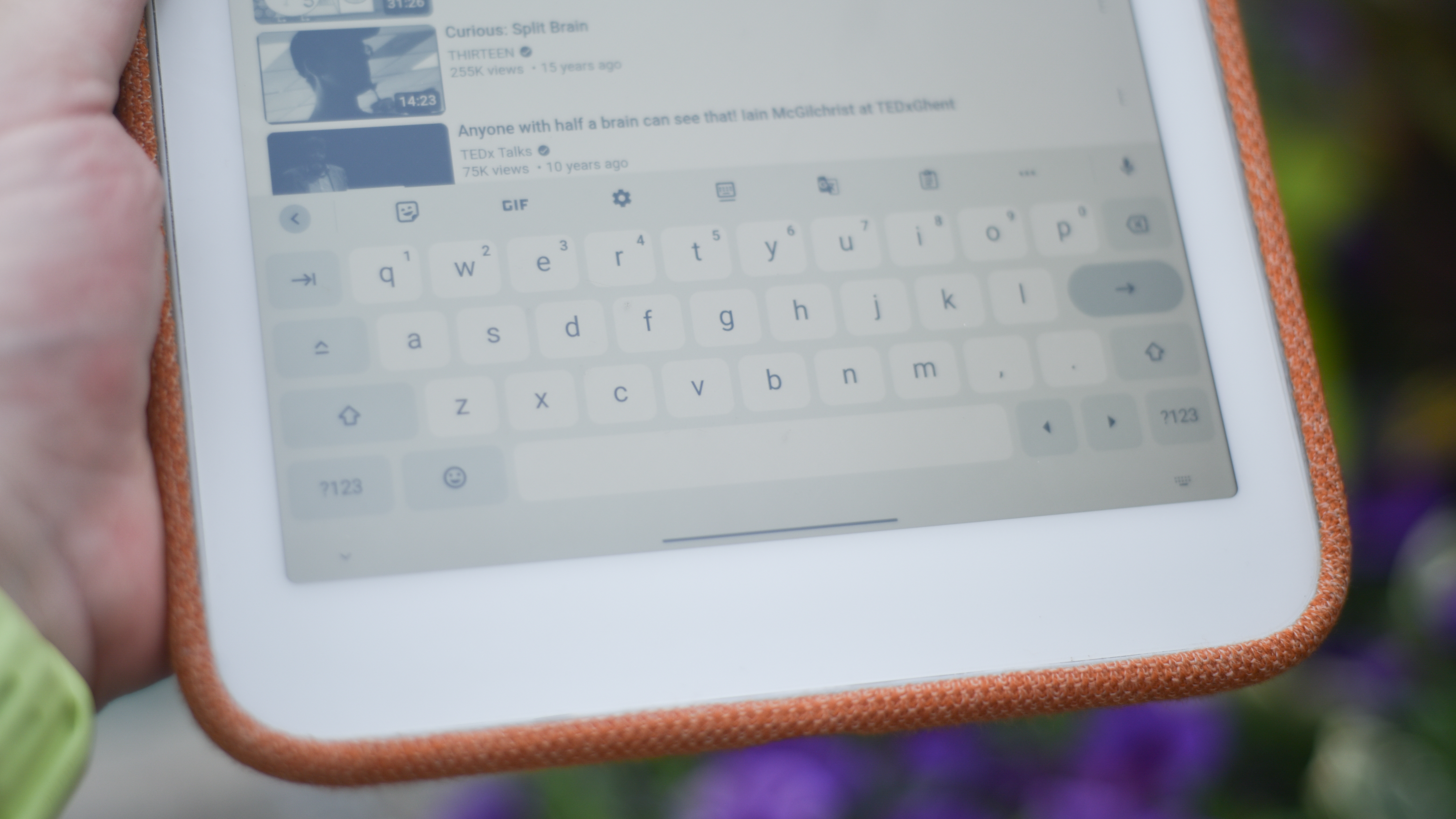
What does reflective LCD actually look like?
I got a chance to check out the Daylight computer in person, and it really does look like a unique technology. If E Ink looks almost exactly like paper, then the Daylight DC-1 tablet looks like the paper in Harry Potter's universe. Katta compared it to the 'Marauder's Map,' and that's exactly what it looked like. It looked like paper with ink that moved. It was uncanny.
There have been other e-paper devices that used reflective LCD, and not E Ink. The One Laptop Per Child project relied on reflective displays for its laptop computers, so they could be used in an outdoor classroom without trouble. The original Pebble Smartwatch also used a reflective LCD, even though Pebble marketed its e-paper display as “e-ink.”
Katta is a fan of all of those devices, as well as E Ink. When I mention that I still have my old Pebble watch, he says the Daylight tablet shares that wearable’s heritage. Daylight is “essentially a Godzilla-sized Pebble watch with a decade of improvement.”
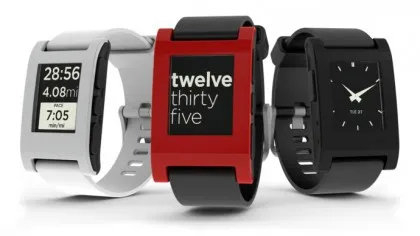
Is Daylight's LCD efficient enough to outshine E Ink?
Is Daylight’s reflective LCD really better than E Ink, as the company claims? It’s faster, for sure, but does it have E Ink’s advantages?
The Daylight DC-1 tablet uses a display with a sharpness of around 190 ppi, which is much less sharp than an E Ink screen. Can it save as much power as E Ink? That’s a great question.
E Ink saves power because of the way it is made. The display is actually an array of tiny spheres made of an alloy like titanium dioxide. These spheres are white on one side and black on the other. When an electric charge is applied to a sphere, it flips over in what’s called an electrophoretic response. Once the sphere has flipped, it will stay in position until another charge is applied.
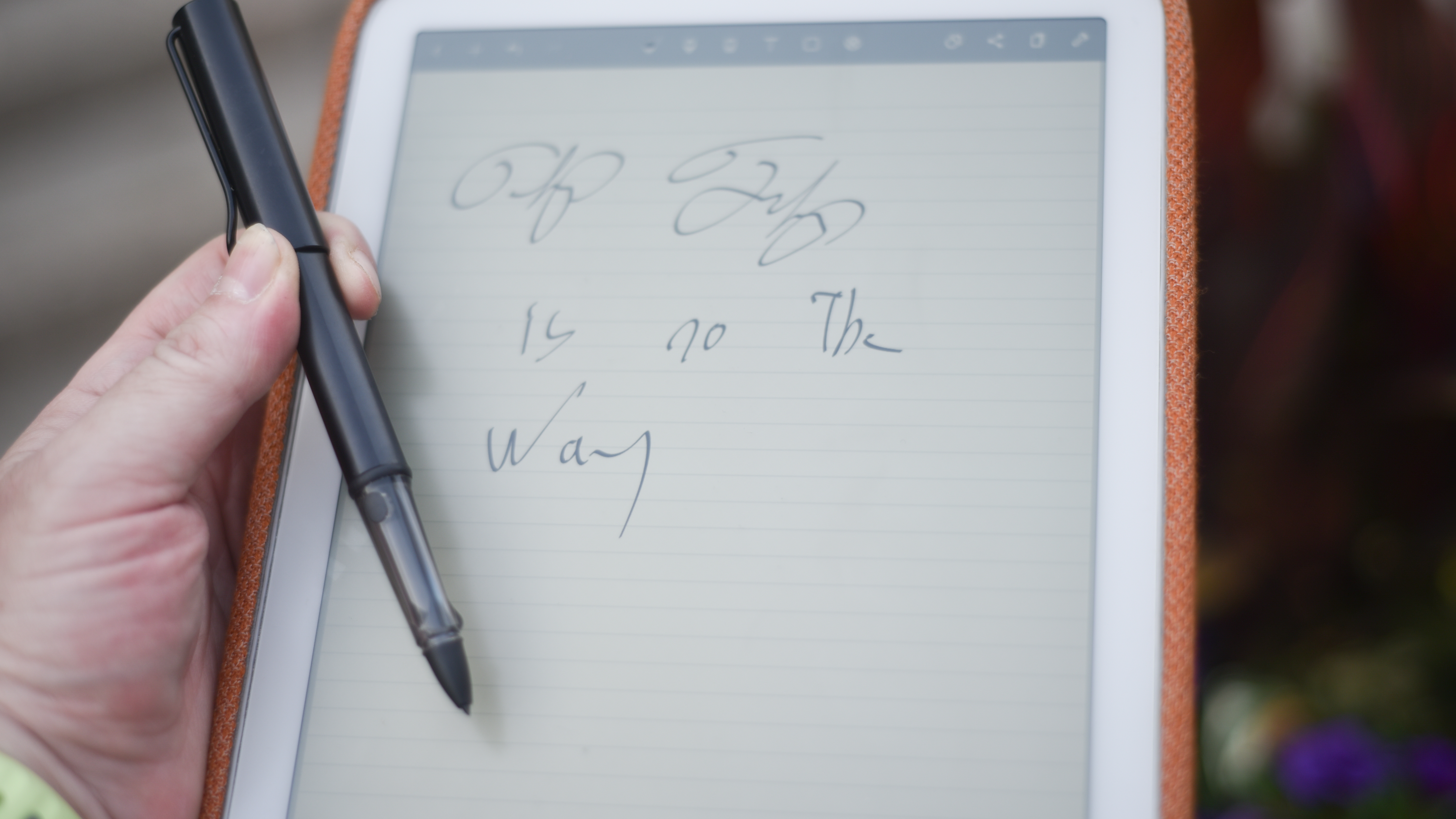
That means your Kindle uses a bunch of battery power to draw a book page, but then it does not need much power at all. In fact, if your Kindle battery dies, the page can stay visible on screen forever. You only need power to change the state of an E Ink display, then it can sit still. This is called bistability, and it’s a key advantage of E Ink.
I spoke with E Ink corporation, and E Ink Assistant Vice President Tim O’Malley agrees. He says “E Ink displays require no power to maintain an image, creating exceptional power efficiency and enabling long periods between device charging. When combined with the true paper-like experience, we aim to deliver the best reflective experience.”
The Daylight DC-1 display does not have bistability properties. When it loses power, it goes blank. To show you an image, the display must constantly apply an electric current to the liquid crystal layer. Theoretically, this means it should not help batteries last as long as E Ink, right?
In fact, it takes a lot of power to flip E Ink's tiny titanium dioxide spheres. Sure, they get to rest while you read a full page, but what if you keep moving? What if you read hundreds of pages an hour? What if you try to watch a video on an E Ink screen, making the display refresh 10 times per second, instead of a few times every minute? The power-saving benefits of E Ink become much less clear.
Katta tells me that Daylight tablets should have much better battery life than a similarly-capable E Ink tablet.
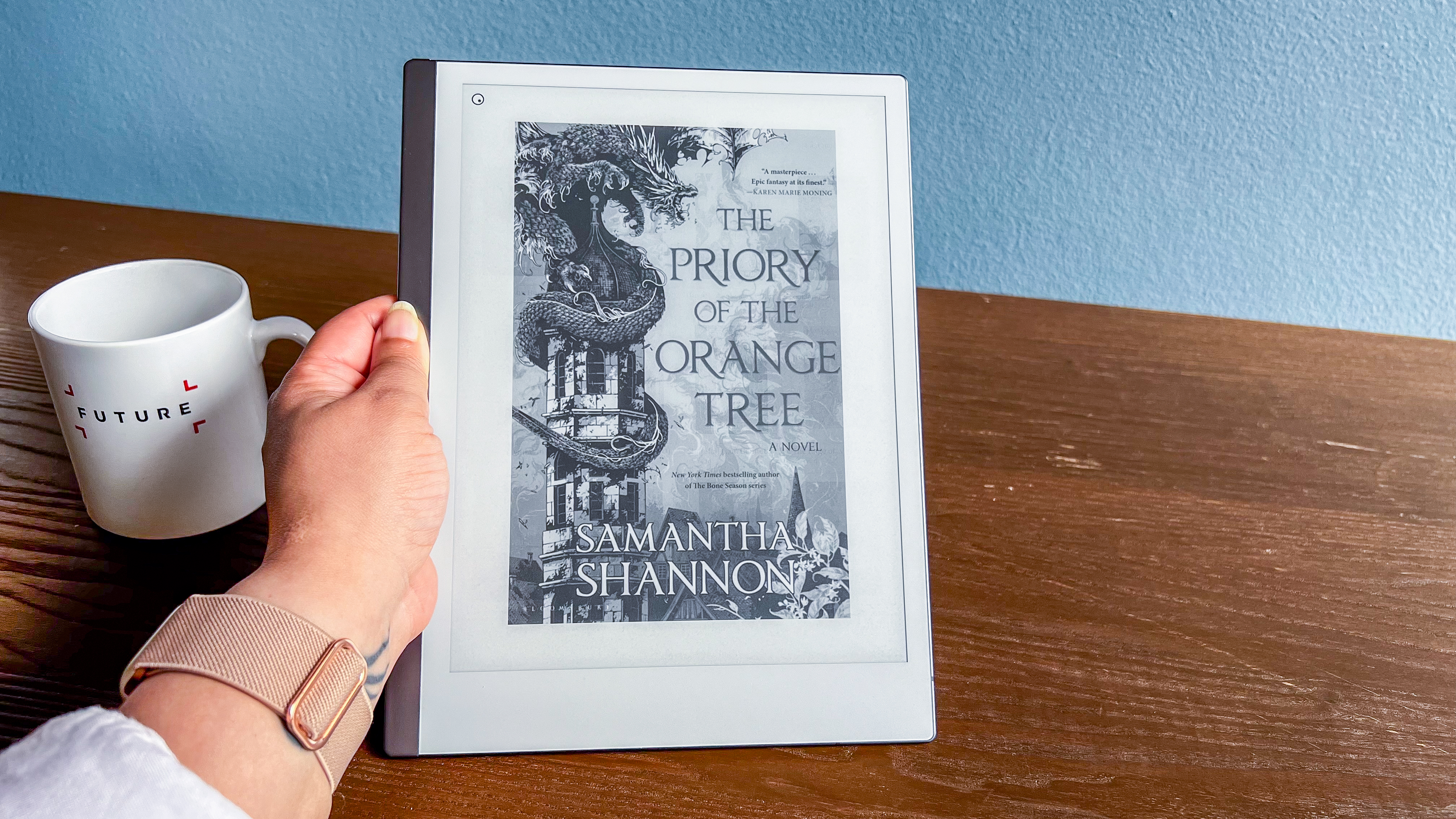
“E Ink actually is hugely power consumptive. The only reason a Kindle lasts so long is because of bistability,” Katta says. In other words, once you start putting the E Ink display to serious work, it requires a lot more power than a normal display.
“On a reMarkable [tablet], if you’re pulling or zooming or jumping between pages? … the battery life is worse than an iPad,” he adds.
E Ink is great for note-taking when the screen is only updating a small local area. When the whole screen needs to redraw itself often, then E Ink becomes a huge power draw compared to a reflective LCD.
Different technologies with different strengths
Daylight isn’t trying to replace E Ink, and Katta is not saying that the Daylight solution is always better. Katta sees a place for E Ink, and likewise, E Ink takes no issue with Daylight and its work on reflective LCD screens.
“We started off by hacking on E Ink, we’re friends with E Ink. We still talk to them. There’s certain applications where [E Ink] is the right thing to use,” says Katta. For ereader devices, calendars, and signage that does not change frequently, E Ink fits.
For its part, E Ink defends its battery life and power management against Daylight. E Ink’s O’Malley says “the Daylight tablet utilizes a transflective LCD. This carries many of the benefits and drawbacks of LCD, which has low overlap with the look-and-feel of E Ink’s ePaper … Contrast that LCD approach with E Ink’s ePaper use of the same color particles as typical paper and printing, which recreates that true paper-like experience.”
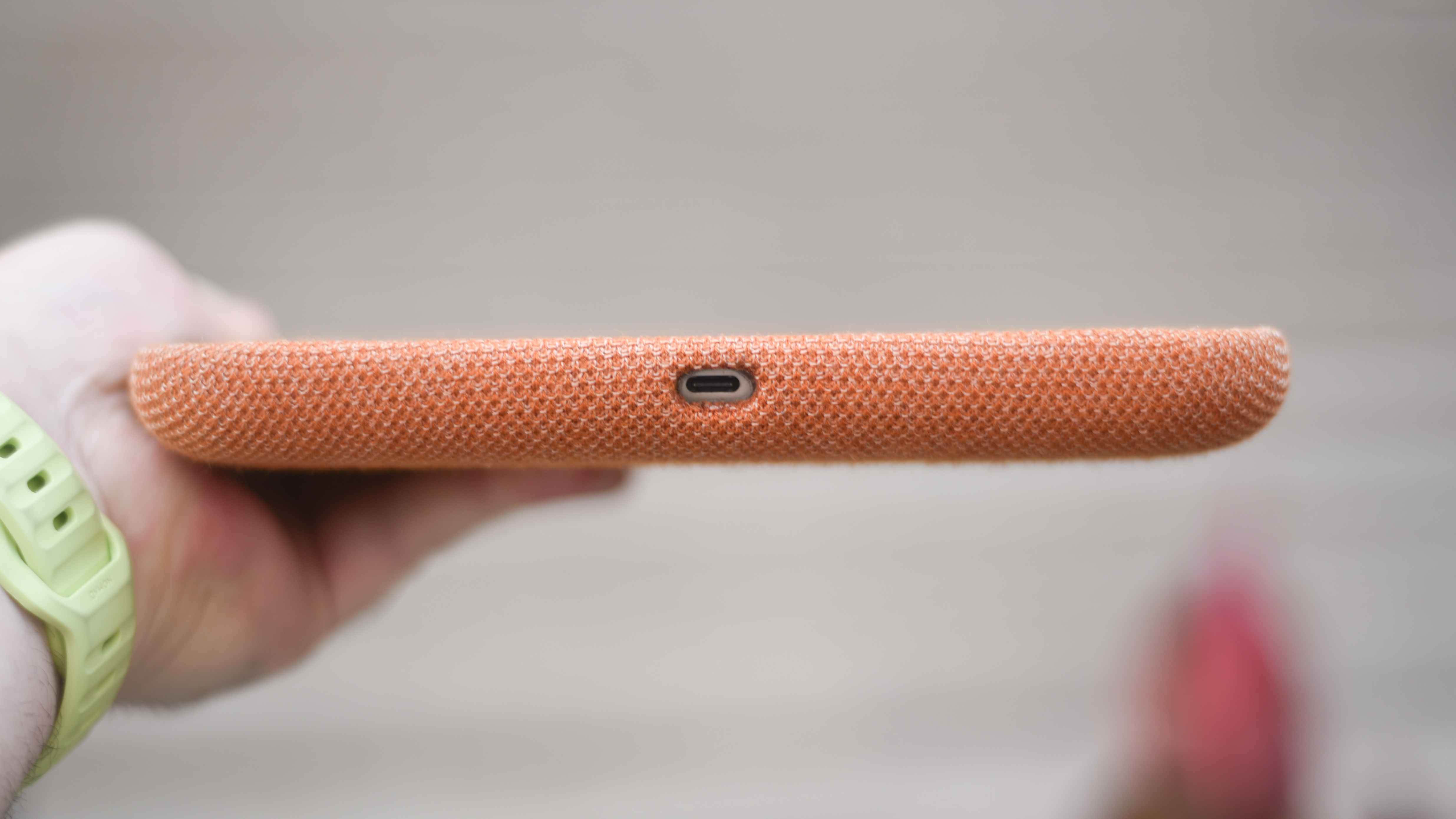
Katta does admit that the Daylight DC-1 tablet was not able to achieve the same white level as current E Ink, but says Daylight’s display is “the color of E Ink when it first started.” Still, he says “E Ink Carta now is like pure white, it’s absolutely beautiful.”
For E Ink, O’Malley also defends the company’s displays as the best for battery life. “E Ink’s ePaper’s bistability means the device doesn’t consume energy when holding a static image (such as a page to read). This is why consumers can go weeks at a time before seeing a need to charge their eReaders.”
“As with nearly all LCDs, I expect this new [Daylight] tablet would require constant power consumption to maintain an image. Users will most likely have to charge it more frequently,” O’Malley says.
Some claims need further scrutiny
E Ink also touts its health benefits for users, saying “E Ink did partner with Harvard School of Public Health and found E Ink’s ePaper is up to 3 times healthier for your eyes than a traditional LCD.”
Reading through that study, it looks like the scientists were reviewing the benefits of reflective displays in general, and not just E Ink technology, but the only reflective displays used in the study were electrophoretic displays of the E Ink type.
Daylight also makes health claims that seem … less scientific. On its site, it says the Daylight DC-1 emits 0% blue light, which “protects circadian rhythm and helps you get to sleep” without citing sources. It claims to offer benefits “for your health,” because it is “designed for full sunlight and nighttime,” but it has no science to back these claims.

Daylight is currently selling its DC-1 computer in limited batches for $729, which includes the tablet, stylus, and a sleeve. A reMarkable 2 tablet costs $399 / £399 / AU$679. The base model iPad 10.9 starts at $349 / £349 / AU$599, and adding a USB-C Apple Pencil costs another $79 / £79 / AU$139.
Daylight says it will send me a device for review, hopefully with the next batch. I’ll be sure to test Daylight’s fascinating new tablet side-by-side against my reMarkable 2 and Kindle Scribe, as well as the faster E Ink display on the Onyx Boox Tab Ultra, to see if it can live up to its high-speed claims.
The Daylight DC-1 is a glimpse into a future where e-paper isn’t just for reading and writing, and tablets aren’t hiding from the sunshine. Whether it truly surpasses E Ink remains to be seen, but one thing’s clear: the race for the ultimate writing tablet is heating up, and this category gets more interesting all the time.







